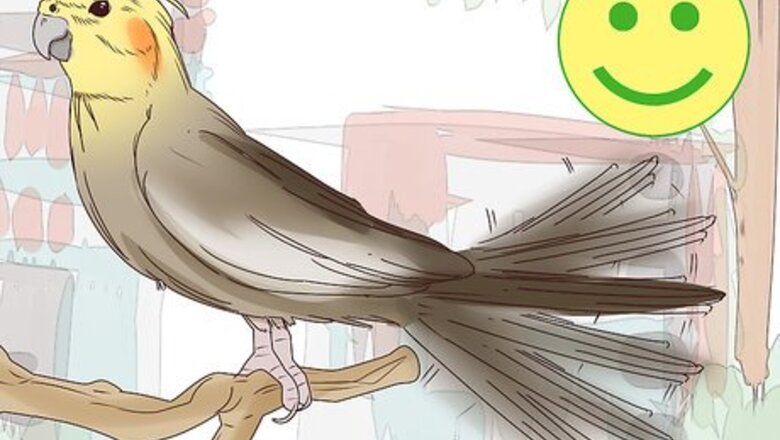
views
Looking for Signs of Contentment
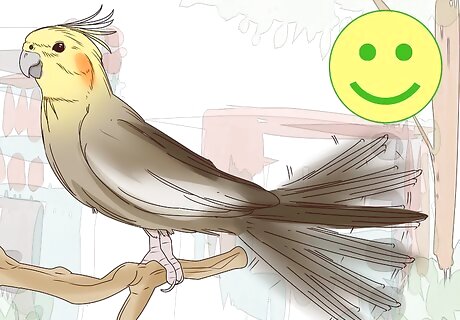
Notice tail wagging. Birds do wag their tails, just like other pets. The bird will wag it back and forth. Generally, this gesture means the bird is happy.
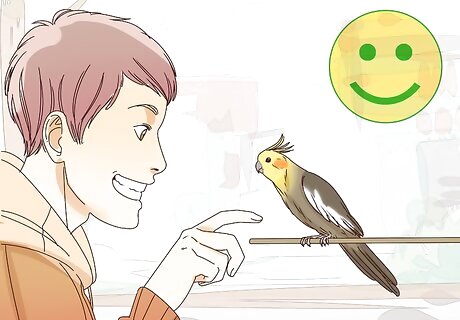
See if he walks toward you. If you're nearby and he comes to you, that's a sign he's happy you're there. However, he's only happy if his head is up as he walks to you, rather than pointing face-down. If the bird puts its head down near you, it's probably asking for head scratches.
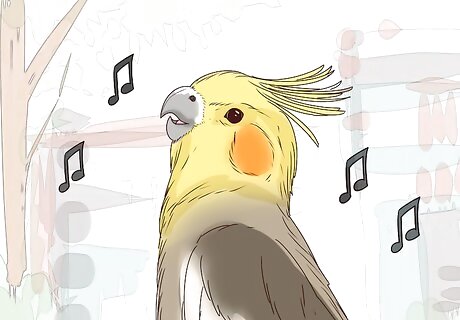
Listen for noise. While generally not a gesture, cockatiels like to talk when they are happy. They will sing to themselves or whistle. They'll also make little chirping noises.
Watching for Signs of Aggression
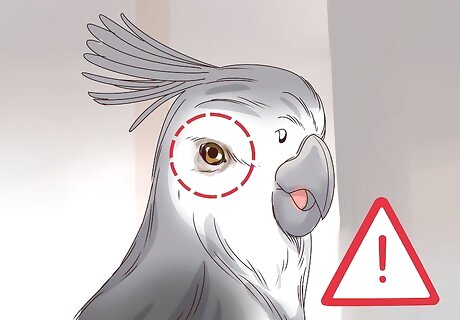
Pay attention to flashing or dilating pupils. If the cockatiel's eyes suddenly dilate, that could be a sign he's getting mad. Stop what you're doing if you see this warning sign.
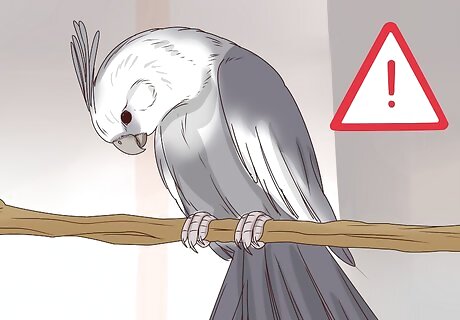
Look at his head and feathers. When he's really angry, he may put his head down. He may also ruffle up his feathers, and fan his tail feathers. If he starts walking toward you in this position, he really wants you out of the way.
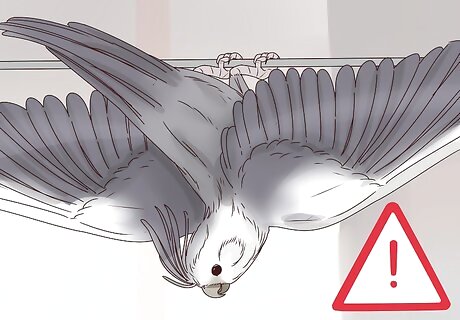
See if he flips upside-down. This stance, paired with spread wings, is usually a sign he's trying to defend his territory. It's probably time to back away if he's making this stance while you're near the cage.

Watch for snapping. Cockatiels will lunge at you if they are about to bite. They may also snap in your direction with their beak. You should leave him alone for a bit if he's trying to snap at you.
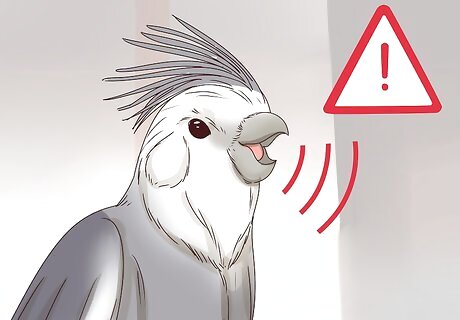
Listen for hissing. While hissing is not a gesture, it does go hand-in-hand with other aggressive behavior, such as lunging. If you hear your cockatiel hiss, he may be about to bite.

Notice wing flapping. Wing flapping, when the bird makes an expansive gesture with his wings and moves them up and down, is usually a sign he's mad or annoyed. Try to leave him alone for a bit, if you've been bothering him.
Checking for Attention-Seeking Behaviors
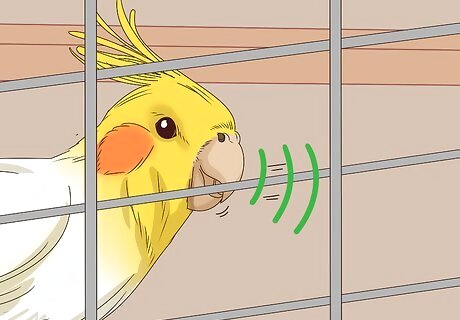
Look for beak banging. Some cockatiels, usually males, will bang their beaks against things, such as counter tops and cages. The idea is to be noticed, usually by whatever or whoever has become their love interest. Cockatiels can fall in love with objects, their own reflection, other birds, and even you. He may also whistle or lean towards the person or item.
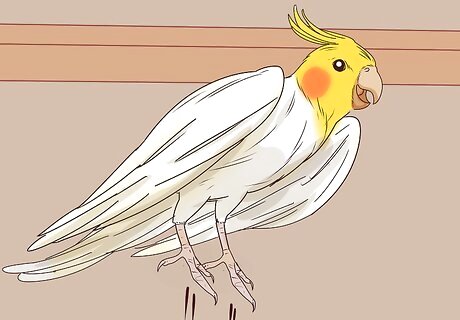
Watch for hopping. Hopping is similar to beak banging; he's looking for attention. However, hopping is taking it to the next level from beak banging. He's really begging for attention.
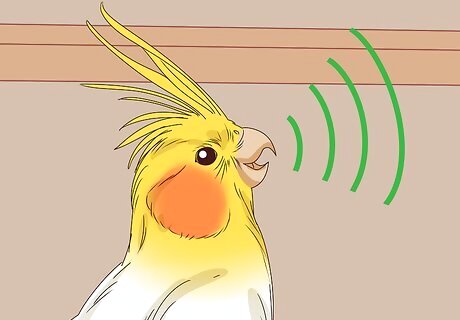
Listen for loud squawking. Sometimes, in coordination with other behaviors, cockatiels will make loud squawking or screaming noises. Basically, the cockatiel is looking for attention.
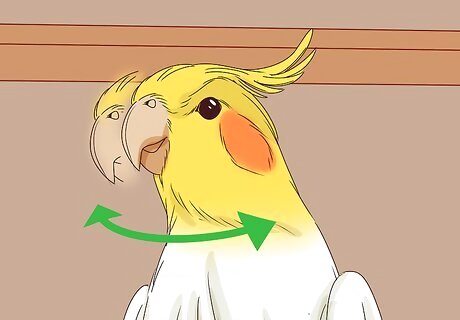
Notice head snaking. Head snaking is when the bird moves his head from side to side looking for something. It's a fluid motion, not jerking. Usually, the bird is just asking to be noticed.
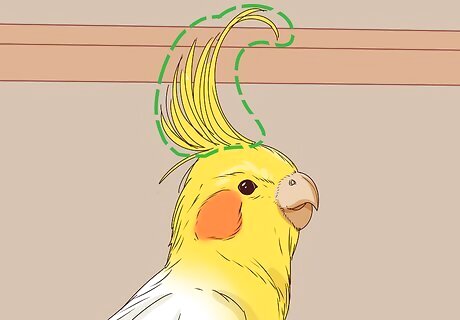
Look for the cresting of the head feathers. When a cockatiel is trying to attract a mate, he may let the feathers on the top of his head curl up into a crest. Basically, it creates a little curlicue on the top of his head. However, he could also be defending his territory with this gesture.
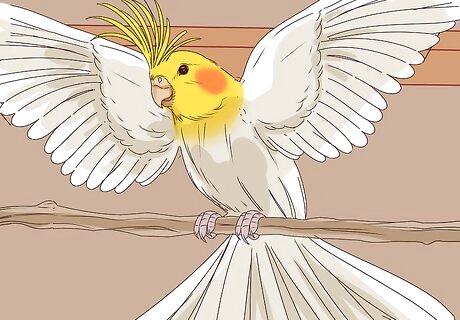
Watch the tail and wing feathers. Another sign of seduction is the fanning of the tail feathers, paired with the cresting of the head feathers and the spreading out the wings. He may also strut around and whistle. Again, this gesture could also be a sign he's defending his territory. Watch if he hisses. This is usually a sign for you to back off.
Noticing Signs of Sickness

Watch if your cockatiel bobs his tail. Sometimes, when a cockatiel is sick, he will bob his tail. If you notice this sign, it may be time to take him to the vet.

Look for sitting. Another indicator your bird could be sick is that he sits. He'll either hunch down on the perch or sit on the bottom of the cage.
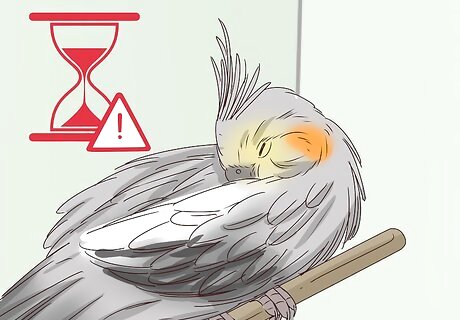
Notice other signs of sickness. While these signs aren't necessarily "gestures," they can also indicate sickness. For instance, your bird may sneeze, get extra sleepy, or lose his voice. He may also may eat more or less, or he may suddenly drink more water. Finally, his droppings may change in appearance (color) or number.

You might also notice behavioral changes in your bird. Feather plucking may be sign of boredom, but is also a symptom of Beak and Feather disease. It's important to know what is normal for your bird and what is not. If you notice anything out of the ordinary, contact your vet.










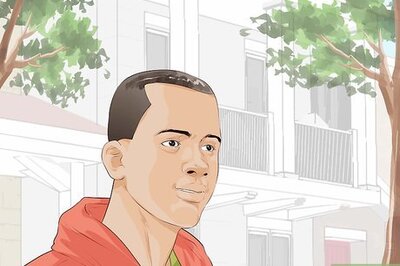




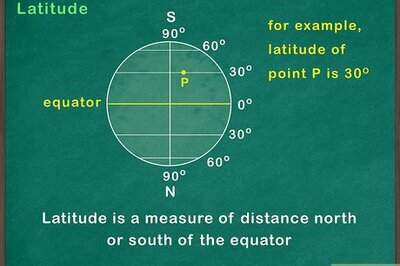
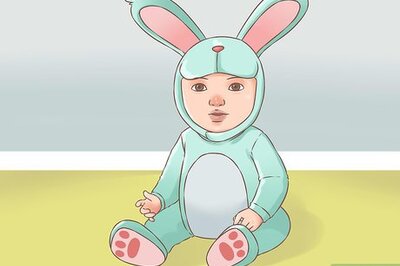
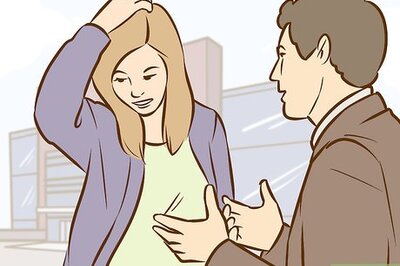
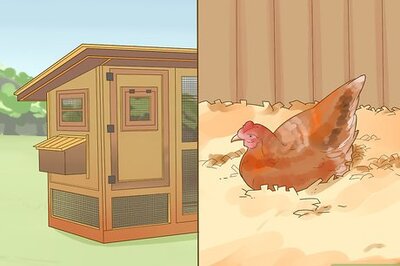
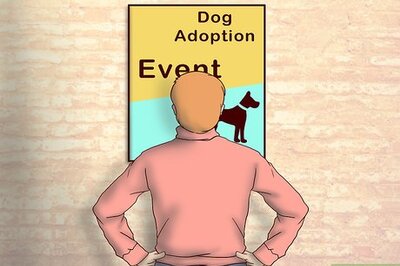
Comments
0 comment